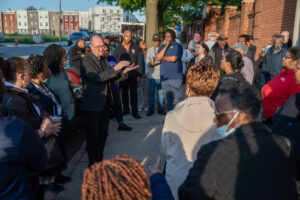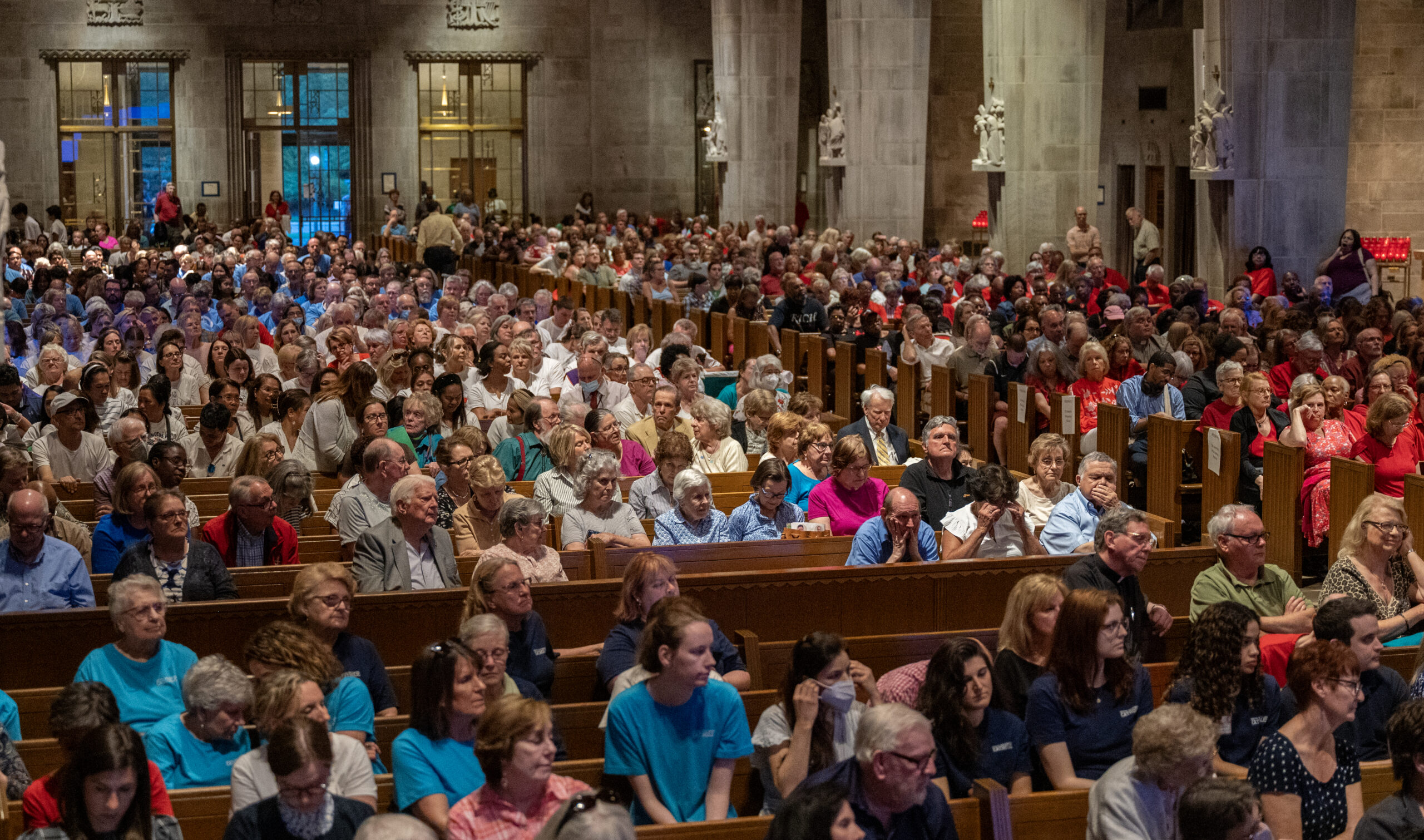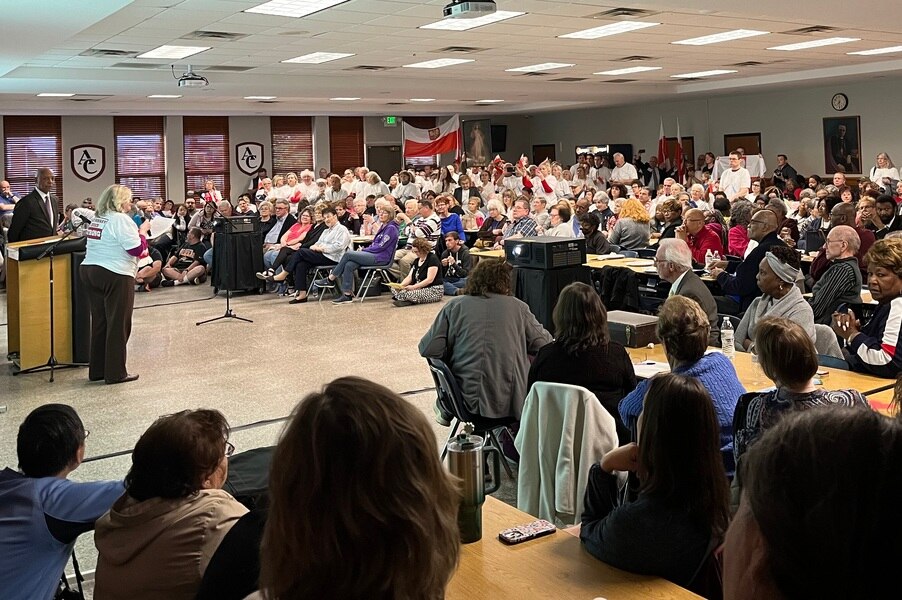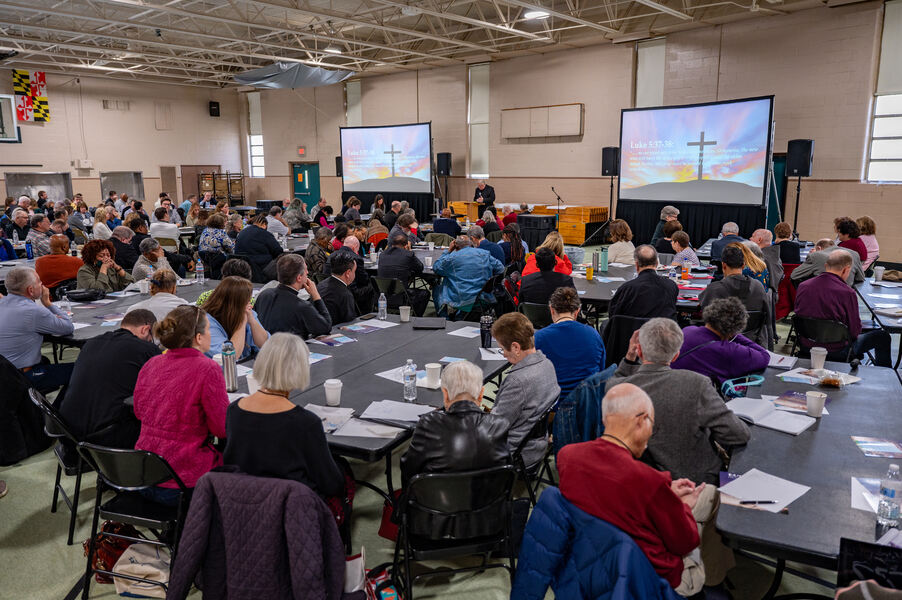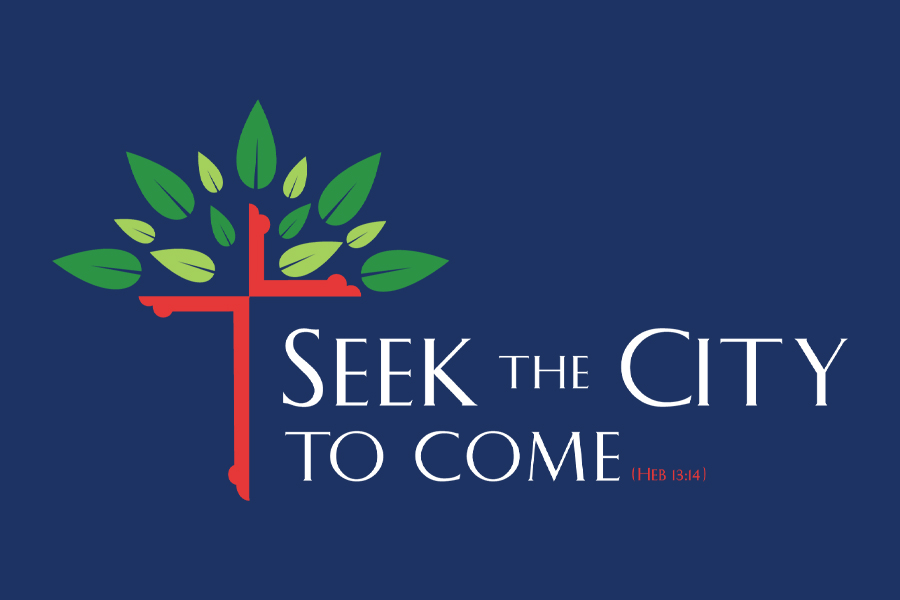In an impassioned feedback meeting, Black Catholics in Baltimore City displayed many of the well-known stages of grieving: denial, anger, bargaining, depression and acceptance.
Participants shared pros and cons of a plan, including opportunities for ministry with larger congregations, as well as concerns about merging parish identities and leaving some areas without a nearby church.
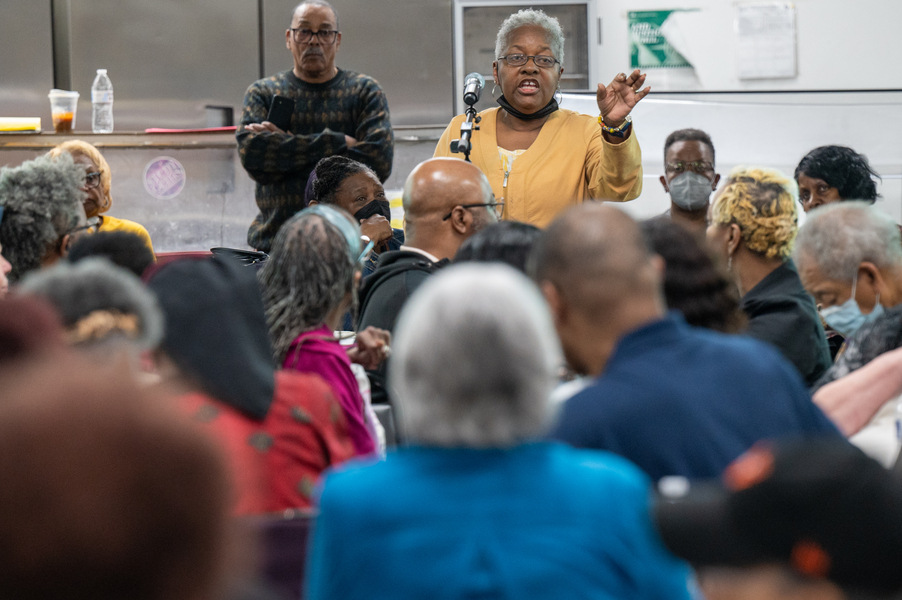
The meeting April 23 at St. Frances Academy in Baltimore saw an overflow crowd of about 250 people come to express their response to the Seek the City to Come proposal, which could potentially alter the landscape of the Catholic Church in Baltimore City and the surrounding area of Baltimore County from 59 worship locations to 26, if it is approved.
The initiative, which began 19 months ago, aims to revitalize the church in the city to focus on a eucharistic vision. Currently, the parishes in the city serve about 5,000 people, about 1 percent of the Archdiocese of Baltimore’s Catholic population, but represent 44 percent of the current 137 parishes.
Three more public feedback sessions are planned by the end of April.
Auxiliary Bishop Bruce A. Lewandowski, vicar for Baltimore City and co-leader of the Seek the City initiative, told the crowd, “We are headed to a destination. … We need a church that is sustainable and viable.” He said the proposal that has been publicized and presented that evening, is “the vehicle which is being built” to move toward that destination.
Geri Royale Byrd, the director of Seek the City, said the size of the crowd was a testament to how Black Catholics are invested in their parishes. “The proposal is just that – it is evolving based on your feedback and comments, emails, letters and voicemails. …
“This evening is about hearing what you have to say,” she said, noting that all the feedback from the evening would be captured, including comments from a livestream of the discussion on Zoom, in which 70 people participated.
Archbishop William E. Lori will weigh that feedback as he considers his decision, the final version of which is expected to be released in mid-June.
Since the process began in the fall of 2022, thousands of people have provided input at parish site visitations and a number of open prayerful meetings – through first a listening phase, moving to vision and then discernment. Three draft modeling sessions refined the maps that become the current proposal.

“We have been listening for two years, we have been visioning for two years,” Byrd said.
The crowd was large enough that about 60 people moved upstairs to the school’s chapel, where Bishop Lewandowski and Julie St. Croix of the archdiocese’s Office of Parish Renewal in the Institute for Evangelization conducted a parallel discussion process.
In both venues, the participants broke into small groups by parish or region to discuss the consequences and challenges of the current proposal, as well as possibilities that the archdiocese may not have considered for the plan.
During the discussion, Byrd told the Catholic Review, “We can’t move forward without hearing from the Black community. They are the first affected by this.” Black communities in Baltimore have systemically been impacted throughout the decades due to a host of unfair policies that have affected Black Catholic parishes for years, she said.
After the small-group discussions, one or two representatives from each parish were asked to provide the feedback to the questions that had been debated.
As participants shared their feedback, a parishioner of St. Francis Xavier, which is proposed to merge with St. Ann and St. Wenceslaus, said she sees more plusses than minuses in the plan. Though she has visited all the parishes in the area, “my heart is at historic St. Francis Xavier.”
She said the benefits include strengthening the parish by pooling funds, adding parishioners, and providing a more diverse and talented group of congregants, while bringing new ideas.

“The sad part is the loss of individual parish identity, … and the loss of potential members unwilling to join the new group,” she said, noting that transportation could be a problem for those for whom the location is not convenient.
Another parishioner said that her biggest worry is that St. Francis Xavier is the oldest Black Catholic parish in the United States and if it just becomes the “East Baltimore Catholic Parish,” it won’t have that history. She also wondered if the parish can accommodate all the people, choirs and organizations that would have to be merged.
Since the proposal allows churches that will no longer be full-time worship sites for daily and weekly Mass to still be used for funerals, baptisms, weddings and other occasional uses, she wondered who would pay the upkeep on these buildings.
She said one of the benefits is that all three churches have different things to offer.
A parishioner of St. Veronica in Cherry Hill, lamented that her parish is proposed to merge with St. Rose of Lima and St. Athanasius, seated at St. Rose of Lima with an additional worship site at Cherry Hill Town Center. She said the Town Center is an unsavory location for Mass.
Noting that the move would merge St. Veronica’s with a congregation that is not predominantly Black, she doesn’t want to have to assimilate into another culture for liturgy since she already does that at her work. She said she wants the worship to coincide with her culture in order to be her “most authentic self.”
She said St. Veronica could be a place for Black Catholics in South Baltimore and could recruit families from nearby Mother Mary Lange Catholic School, many of whom are not Catholic, in order to host more baptisms and other sacraments.
“Have us be with our people so we can worship as we are,” she said.
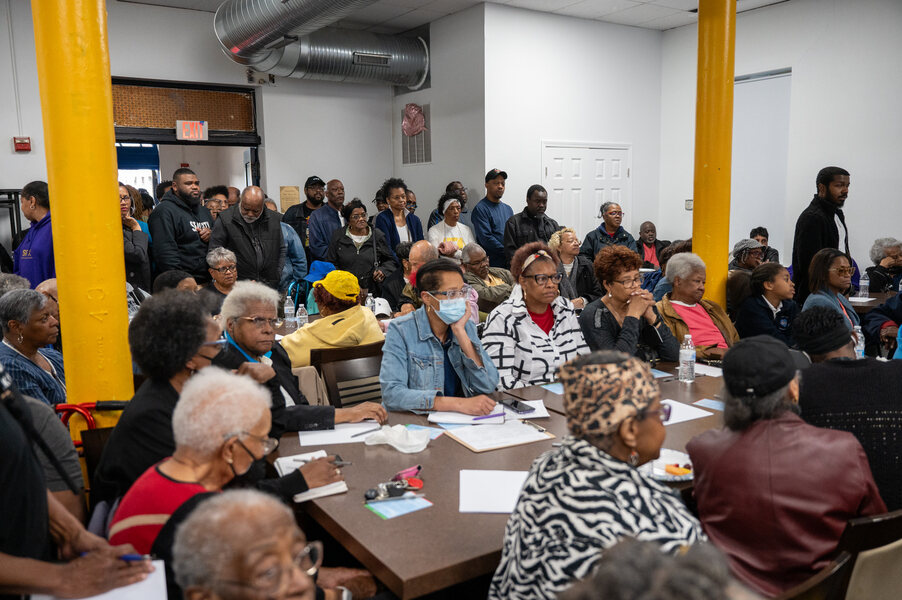
The proposal envisions a West Baltimore Parish seated at St. Bernardine, with an additional possible worship site at Edmondson Village Shopping Center and St. Peter Claver remaining open temporarily. Parishes merging include St. Bernardine, St. Peter Claver, St. Edward, St. Gregory the Great, St. Pius V and part of the territory of Transfiguration Catholic Community.
A St. Peter Claver parishioner said that if the church was removed from the Sandtown-Winchester area, “you’ll lose a lot of members because a lot of our members live in the county but come to their home churches.” She added that the parish currently has a bus to get neighborhood people to and from Mass, which is a big need in the neighborhood.
She said the parish, named for the patron saint of slaves, has a long tradition of working to remove racial and economic barriers, including BUILD (Baltimoreans United in Leadership Development) and the No Boundaries Coalition.
Transportation was echoed by other parish representatives, including one from St. Matthew and Blessed Sacrament parishes, which under the plan would be seated at St. Matthew, merging St. Matthew, Blessed Sacrament, Most Precious Blood, Shrine of the Little Flower, St. Anthony of Padua, St. Dominic, St. Francis of Assisi and St. Mary of the Assumption.
One parishioner of St. Matthew and Blessed Sacrament, which are currently together in a pastorate, said the plan could bring new energy, new ideas, new families with more children, a larger worship community and the ability to grow the music ministry and worship.
Another cited the question of parish identity, wondering whether the parish that becomes the main worship site will be willing to give up its identity so that others feel welcome. “We see it as a congregation coming together, breaking down boundaries.” But he also wondered whether people of the newly merged parish would be open to different ways of celebrating liturgy.
A parishioner of Transfiguration Catholic Community, which would be an additional worship site for a parish merging Holy Cross, St. Mary Star of the Sea, Our Lady of Good Counsel and part of Transfiguration, seated at Holy Cross, said that age 73, he will probably be gone by the time the plan is fully implemented.
“It needs to be done. We don’t need all these buildings anymore,” he said. As a realist, he knows things have to change. “We want things to be better.”
He invited those present to “imagine all the power if we move together. … Our children will see the direction we set.”
Answering questions at the end of the meeting, Bishop Lewandowski said some of the properties that will no longer be used for worship can be repurposed for other ministries. If the property is sold, the funds will follow the people to the newly formed parish.
The bishop said the archdiocese will work with parishes to implement the plan, but each situation will be unique. “Some might need six months, some a year, some longer. Our minds and hearts don’t change quickly.”
Bishop Lewandowski said there will be three more public feedback sessions about the proposal:
- April 25: Archbishop Curley High School, 3701 Sinclair Lane, 6:30-8:30 p.m. (Zoom link to attend online)
- April 29 (in Spanish): Our Lady of Fatima, 6400 E. Pratt St., 7-9 p.m. (Zoom link to attend online)
- April 30: Cathedral of Mary Our Queen (new location), 5200 N. Charles St., 6:30-8:30 p.m. (Zoom link to attend online)
Email Christopher Gunty at editor@CatholicReview.org
To see the proposal and comment on the Seek the City plan, click here.
More Seek the City Coverage
Copyright © 2024 Catholic Review Media
